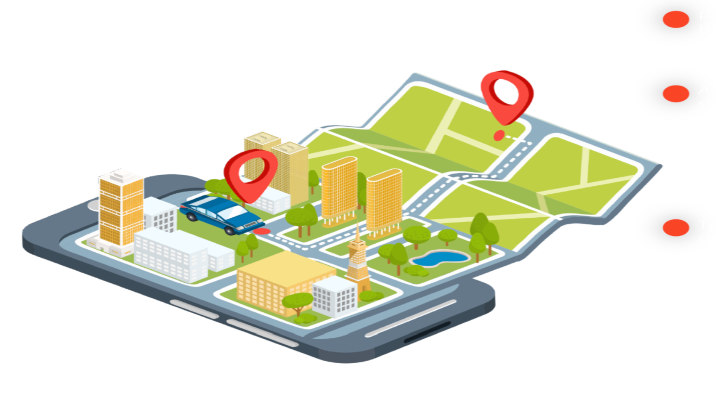Where would we be today without our cell phones? They have become a part of everything we do. We depend on our phones for communication, from making appointments to talking with current and future clients.
Most DJs will tell you that a smart phone is a crucial tool for conducting a successful business. It’s estimated that at the end of this year, there will be almost 7 billion smartphone users – which is almost 3 billion more than just six years ago. Statistics like that mean advertisers, marketers, and business owners have learned to become savvier in how they market themselves to customers.
The rise of mobile phone usage over the years means you can target customers in so many new ways because they are on their phones for a large part of the day.
So how can you as a business owner leverage a digital marketing tactic that gets your information in front of potential clients?
Geofencing Has Entered the Chat
I’ve discussed Geofencing in some of the local Facebook groups and I’ve received a lot of messages from DJs asking how it works, the costs, software you need, agencies that do it, and other questions that piqued their curiosity about it. Without going too much down a rabbit hole, Geofencing simply put is a digital advertising tactic that involves location-based ads that are served to people through social media, phone apps, app notifications, text messaging and within the Google Display Network.
Because the ads are location-based, they are triggered by cellular data and GPS when a mobile device or RFID tag enters or exits a virtual geographic boundary, known as a geofence.
How Can Geofencing Work For You?
Let’s say a woman recently became engaged and she started her journey of wedding planning. She enters a venue that she is interested in to see the layout and receive information. While inside waiting for the coordinator, she jumps on social media to message a friend and immediately starts seeing ads for your DJ services. She also jumps on her favorite shopping website real quick and instantly sees ads for you in a sidebar within the Google Display Network that the website is using.
A couple of days later, she goes to meet with a competitor of yours at their office. She doesn’t sign with them because she wants to think things over or meet with other DJs. She gets coffee down the street at a coffee shop, launches an app on her phone and starts seeing video ads for your services that give better value and everything she’s looking for. She immediately clicks on the ad, goes to your website, and requests a consultation.
A week later, she goes to a big bridal show to meet with vendors. While inside, she receives an app notification about your services, an exclusive deal that expires within a couple of hours, and a call to action to fill out an inquiry form on your website to take advantage of the deal even though you’re not at the show as a vendor.
These are just some of the basic ways that Geofencing works or could be used. You have better targeting versus just casting a wide net when it comes to digital-media buying. With the ability to hyper-target people, you’ll not only be able to reach your clients at the right time and at the right place, but be able to engage them with messaging that is relevant and timely.
And most important, by targeting clients in a specific geographic area, and filtering that area by specific targeting criteria, you’re much more likely to engage and convert them into actual paying clients or steal market share from the competition.
The Effectiveness of Geofencing
For obvious reasons, Geofencing can produce incredible results for marketers and business owners looking to roll out hyper-targeted, location-based marketing. Some facts:
- Mobile ads with Geofencing have double the click-through rate.
- Geofencing is compatible with 96-percent of smartphones.
- The average consumer spends over six hours a day on their mobile device.
- Eighty-three-percent of consumers prefer a personalized ad experience.
- Three out of four consumers complete an action after receiving a message when approaching a specific location
- Ninety-three-percent of shoppers visited a business after receiving location-based messages.
The reason Geofencing is so effective is because you’re targeting your clients when they enter in a very specific demographic area. So, remember, when creating content for Geofencing, give them a clear and immediate reason to contact you right away. Geofencing doesn’t work if it’s simply marketing messages promoting brand awareness like general announcements. Geofencing works best when you create urgency with your ad content.
Geofencing is just one piece of the marketing puzzle and just another tool when it comes to digital tactics and media buying. To make marketing work best for your business, utilize multiple target-marketing techniques for best results. As with any marketing plan you develop as a DJ, you won’t receive a high ROI utilizing just one strategy. You should mix Geofencing with content marketing, remarketing, search engine advertising, display advertising, and video advertising (just to name a few), in order to customize and target multiple, specific audiences.
In my next DJ LIFE MAG article, I’ll discuss the costs, software, a proper budget, and ways you can start Geofencing quickly. Until next time, stay safe and well out there!
Josh Volpe is the owner of Kalifornia Entertainment in Rochester, N.Y.
To check out more business tips, click here.


